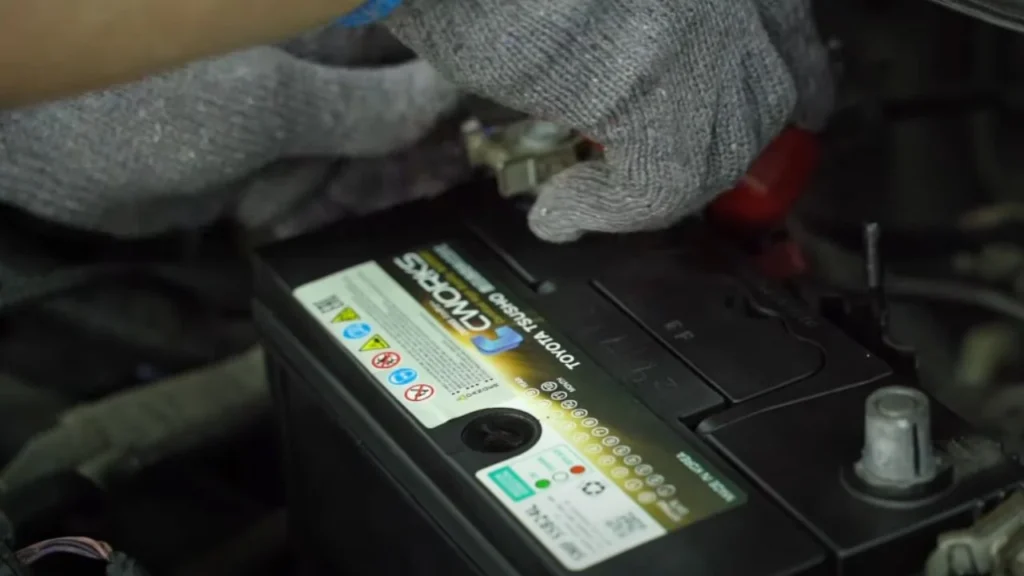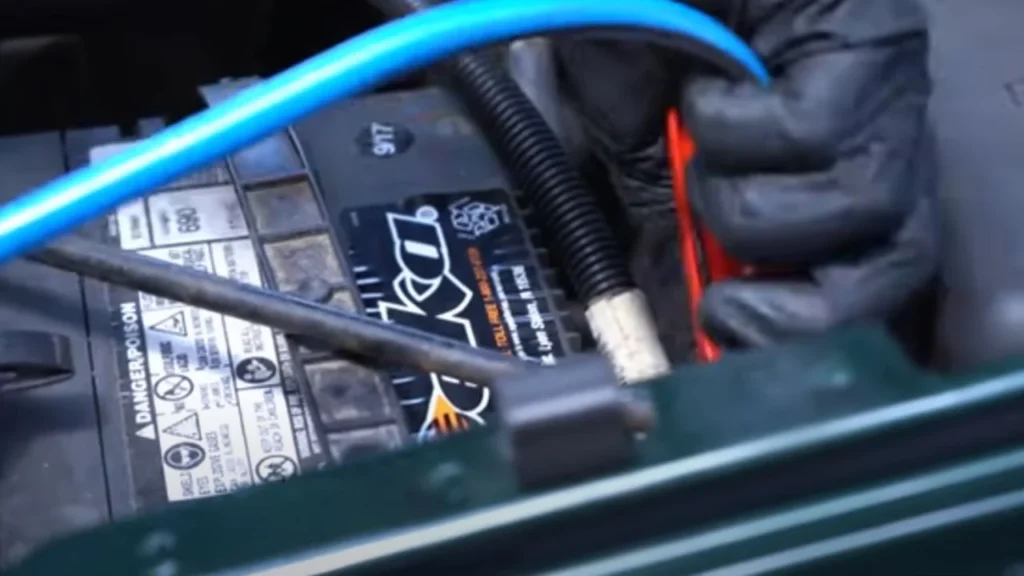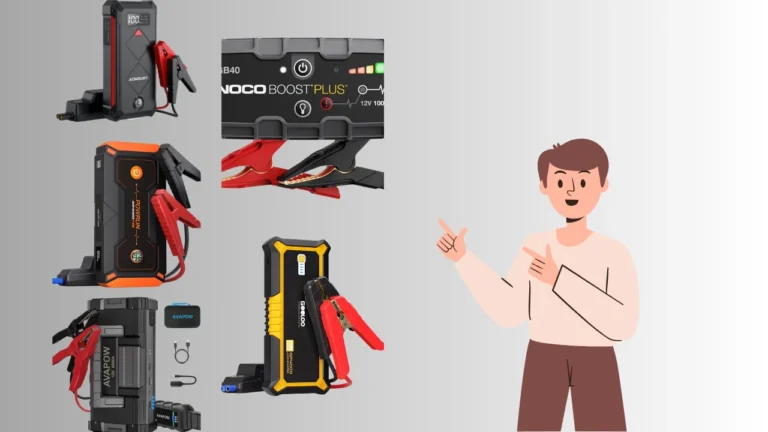A jump start can be a lifesaver when your car’s battery unexpectedly dies. However, the question that often arises afterward is: Do I need to replace battery after jump start? The short answer is not necessarily, but several factors should be considered to determine whether a battery replacement is required. Learn the step-by-step process on how to jump-start a diesel truck with 2 batteries, ensuring you avoid potential mistakes that could damage your vehicle or batteries.
Signs of Battery Failure
Sometimes, the battery’s condition post-jump start may not be obvious immediately. There are several warning signs to look out for that could indicate the need for replacement:

- Difficulty starting the engine: If your car takes longer to start than usual or requires multiple attempts, the battery may not be holding enough power.
- Dimming headlights and dashboard lights: If you notice that your lights are flickering or dimming while the car is running, this could signal a weakening battery.
- Corrosion or leaks: Visible signs of wear and tear, such as corrosion on the terminals or battery leakage, can affect battery performance. In such cases, a replacement is often the best solution.
Do I Need to Replace Battery After Jump Start?
So, Do I need to replace battery after jump start? You don’t necessarily need to replace your car battery after a jump start. If the battery is relatively new and recharges properly after driving, it’s likely still usable. However, if the battery is old or requires frequent jump starts, replacement may be needed to prevent further issues. Here’s when you should replace it:
1. Condition of the Battery
If your battery was nearing the end of its life before the jump start, it may not hold a charge for much longer, and replacing it could be inevitable. Typically, car batteries last between 3 to 5 years, depending on driving habits, weather conditions, and maintenance. If your battery is within this range, it might be time to consider a replacement, especially if it has been jump-started multiple times.
Moreover, the age of the battery plays a significant role in its ability to recharge and function correctly after a jump start. If the battery is relatively new (less than two years old) and this is its first jump start, you can probably continue using it without issues. However, an older battery that struggles to hold a charge might be better replaced to avoid future problems. Discover practical advice on how to jumpstart a refrigerator compressor, a useful guide for when your fridge stops cooling properly.
2. Drive Time After Jump Start
After a successful jump start, driving your car for 20-30 minutes allows the alternator to recharge the battery. If the battery recharges properly and the vehicle starts normally the next time, replacement might not be necessary. However, if the car struggles to start again shortly after, even after a good drive, the battery may not be holding the charge, which could be a sign that it’s time for a new one.
3. Underlying Electrical Issues
Sometimes, a jump start isn’t enough because the problem may not lie solely with the battery. Other electrical components, like the alternator, could be malfunctioning. The alternator charges the battery as you drive, and if it’s faulty, the battery will drain even after a successful jump start. If your battery keeps dying shortly after being recharged, a mechanic should check the alternator and charging system.
Similarly, parasitic drains, where electrical systems continue to use power even when the car is off (such as lights left on), can quickly deplete a battery’s charge. Fixing these issues may restore your battery’s functionality without needing a replacement.
4. Impact of Jump-Starting on Battery Health
Jump-starting a car doesn’t usually harm a battery, but repeated jumps can accelerate wear and tear. Every time you jump-start your car, the battery undergoes a rapid discharge and recharge cycle, which puts stress on its components.

If you find yourself needing to jump-start your car frequently, this could shorten the battery’s lifespan. In such cases, it may be better to replace the battery to avoid further inconvenience. Explore whether it is bad to keep jump-starting your car battery, including the long-term effects it may have on your vehicle’s performance.
How to Extend Battery Life After a Jump Start?
To extend the life of your battery after a jump start, follow these tips:
- Drive regularly and for extended periods: Short trips don’t give your alternator enough time to recharge the battery fully. Regular long drives are better for maintaining charge.
- Reduce electrical load: Turn off electrical accessories such as the radio, lights, and air conditioning while the engine is off to prevent unnecessary drainage.
- Inspect and maintain battery terminals: Clean off corrosion and ensure the battery is tightly connected. Corrosion can interrupt the flow of electricity and cause starting issues.
When Should You Replace Your Battery?
If your battery continues to show signs of weakness after a jump start, or if you experience recurrent issues such as difficulty starting or dimming lights, it’s time to replace the battery. Additionally, if your battery is older than 3 years and has required several jump starts, a replacement is likely the best option.

Moreover, visible damage, such as bulging or leaking, is a clear indicator that the battery needs to be replaced immediately. A damaged battery can fail at any time and leave you stranded, so it’s better to be proactive.
Can You Prevent the Need for a Jump Start?
Preventing your car battery from needing a jump start in the first place is always the best course of action. While batteries naturally degrade over time, proactive maintenance and responsible usage can significantly extend their lifespan. By understanding the causes of battery failure and addressing them before they result in a dead battery, you can save yourself from the inconvenience of frequent jump starts. Learn how to safely jump-start a box truck with this guide on jump-starting a box truck, covering essential tools and step-by-step instructions.

1. Monitor Battery Age
One of the simplest ways to avoid jump-starting your car repeatedly is to be mindful of the battery’s age. Most car batteries are designed to last between three to five years, depending on usage and environmental conditions.
As the battery approaches the end of its lifespan, it may be wise to replace it preemptively rather than waiting for it to die. A quick inspection of the battery label or a visit to your mechanic can provide insights into the remaining lifespan of your battery.
2. Maintain the Charging System
The charging system, which includes the alternator, is responsible for replenishing the battery as you drive. If your alternator is faulty, your battery may not charge properly, leading to frequent jump starts.
Warning signs of a malfunctioning alternator include dim headlights, difficulty starting the engine, and a lit battery warning light on the dashboard. If any of these symptoms are present, it’s essential to have the charging system inspected and repaired if necessary.
Additionally, parasitic drains, which occur when electrical components continue to draw power even when the car is turned off, can quickly deplete a battery. Common culprits include leaving interior lights on, faulty wiring, or malfunctioning electronic devices.
To prevent parasitic drains, ensure that all lights and electronics are turned off before exiting the vehicle, and consider having your car’s electrical system checked for any hidden issues.
3. Limit Short Trips
One of the lesser-known causes of battery failure is the frequency of short trips. Every time you start your car, a significant amount of power is drawn from the battery. During longer drives, the alternator recharges the battery.
However, if you frequently take short trips, the battery may not have enough time to recharge fully, leading to gradual depletion. To avoid this, try to combine short trips or take your car for longer drives periodically to give the battery time to recharge.
4. Invest in a Battery Charger
For those who don’t drive their vehicles frequently, investing in a battery charger or trickle charger can help maintain the battery’s charge between uses. A battery charger can be especially useful in cold climates, where freezing temperatures can reduce a battery’s ability to hold a charge. Regularly charging the battery using an external charger can prevent it from draining and reduce the need for a jump start.
5. Keep the Battery Terminals Clean
Corrosion on the battery terminals can impede the flow of electricity, causing starting issues. Periodically checking the battery terminals for signs of corrosion and cleaning them as needed can prevent this problem.
You can use a mixture of baking soda and water to clean corrosion from the terminals, or purchase a specialized terminal cleaner from an auto parts store. After cleaning, apply a thin layer of petroleum jelly to the terminals to prevent future corrosion. Discover the steps for jump-starting a Mini Cooper efficiently and avoid damaging your car’s sensitive electronics.
6. Avoid Overusing Electrical Accessories
Leaving your headlights, radio, or air conditioning on while the engine is off can drain the battery quickly. Modern vehicles often come equipped with battery-saving features that automatically turn off lights and accessories after a certain period, but it’s still important to be mindful of your usage. To preserve battery life, always turn off all electrical devices before turning off the engine.
7. Protect Your Battery from Extreme Temperatures
Both hot and cold temperatures can take a toll on your battery. In extremely cold weather, the chemical reactions inside the battery slow down, reducing its ability to generate power. In contrast, hot weather can cause the battery fluid to evaporate, leading to internal damage.
Parking your car in a garage or shaded area and using a battery blanket in cold climates can help protect your battery from the effects of extreme temperatures.
8. Regular Battery Inspections
Finally, having your battery tested regularly, especially if it’s more than three years old, can help identify issues before they lead to failure. Many auto shops offer free battery testing as part of routine maintenance services. These tests measure the battery’s ability to hold a charge and can help you determine when it’s time for a replacement.
In conclusion, while a jump start can get you back on the road, it’s not a long-term solution if your battery or charging system is compromised. Regular maintenance, responsible usage, and timely replacement can help ensure that your battery remains reliable, saving you from the frustration of being stranded with a dead battery.
By being proactive and addressing potential issues early, you can extend the life of your car battery and minimize the risk of needing another jump start. Understand the process and precautions when jump-starting a 24V system with a 12V battery to prevent system overloads.
Conclusion: To Replace or Not to Replace?
In summary, a jump start does not always mean you need to replace your car battery. If the battery is relatively new, holds a charge after being jump-started, and your car starts normally after some driving, you may not need a replacement.
However, if your battery is old, frequently needs a jump start, or shows signs of deterioration, replacing it will likely save you future headaches and ensure that your car remains reliable on the road.
Ensuring proper maintenance and checking for underlying issues like alternator problems can also help prolong the life of your car battery after a jump start. Hope so, now you got the answer to: Do I need to replace battery after jump start? Explore the best portable marine battery jump starters for reliable performance when you’re out on the water.
Ali is a tech enthusiast and automotive aficionado, passionate about sharing insights on the latest innovations and industry trends.





